Running is more than just a sport or a way to stay fit—it’s freedom. For those with limb loss, getting back to running can feel like regaining a part of life that was missing. Thanks to advancements in prosthetic technology, running-specific prosthetic limbs now allow amputees to sprint, jog, and even compete at professional levels. But choosing the right one isn’t as simple as picking any prosthetic.
There are many factors to consider, from the type of amputation to the kind of running you plan to do. Do you want to run for fitness, compete in races, or simply enjoy an active lifestyle? The right prosthetic limb will make all the difference. This guide will help you understand the best options available, how to choose the right one, and what to expect during the process.
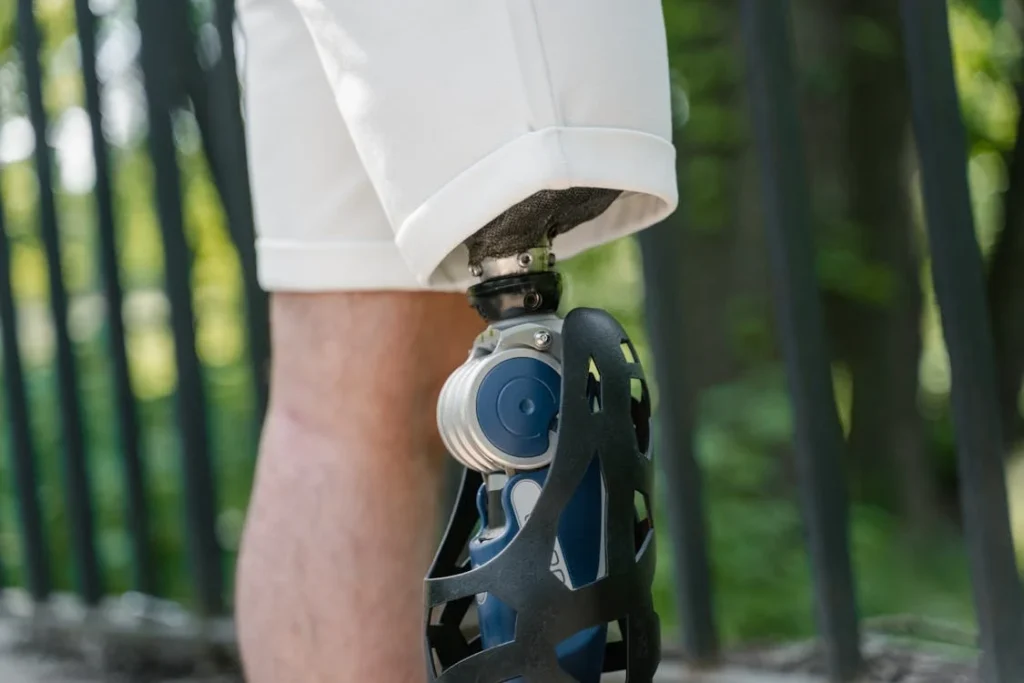
Understanding Running Prosthetics
Unlike everyday prosthetic limbs, running-specific prosthetics are designed to handle high-impact movements and provide energy return. They are built differently to mimic the natural motion of a foot while absorbing shock and propelling the user forward.
A key component of a running prosthetic is the blade-style foot, commonly seen in professional sprinters. These curved carbon-fiber feet store and release energy, giving a spring-like effect that helps with speed and efficiency.
However, there are also options designed for casual runners who prioritize comfort and stability over maximum performance.
Another important element is the socket, which connects the prosthetic limb to your residual limb. A well-fitted socket is crucial for comfort, stability, and overall performance.
Some models come with vacuum suspension systems that provide a secure fit, reducing movement and discomfort while running.
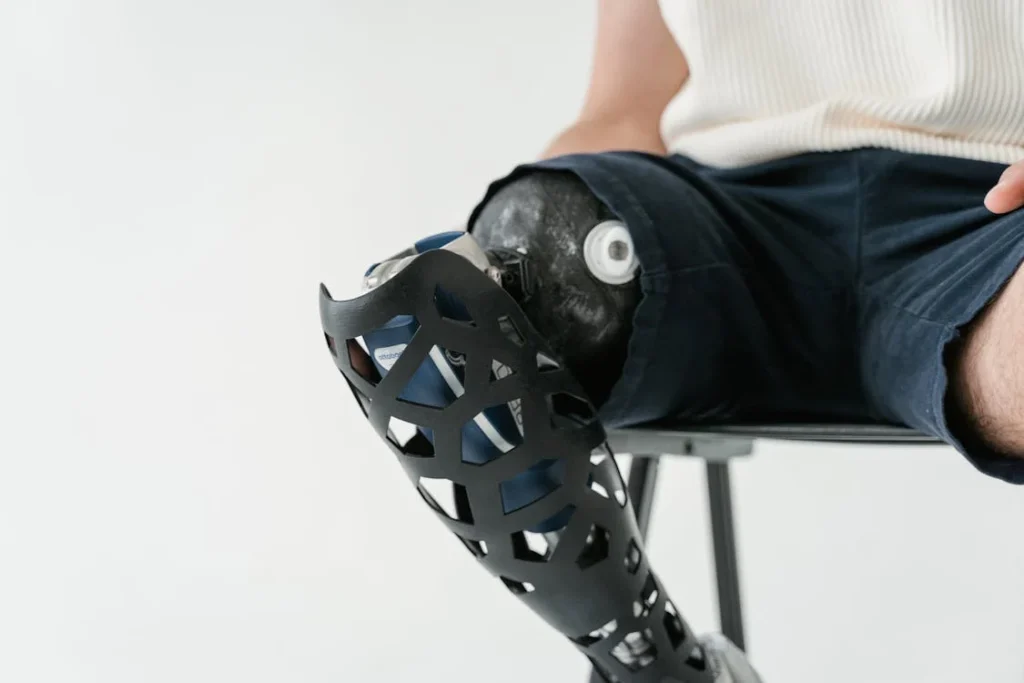
Choosing the Right Prosthetic Limb for Running
Selecting the right prosthetic limb for running is not just about picking a high-tech model—it’s about finding the perfect fit for your body, your goals, and your level of activity.
A good running prosthetic should feel like an extension of yourself, offering both comfort and performance. The right choice will depend on several key factors, including the type of amputation, the terrain you plan to run on, and your experience level as a runner.
Understanding Your Running Needs
Before choosing a running prosthetic, you should first define what kind of running you will be doing. A casual jogger who runs a few kilometers for fitness will have different needs compared to a competitive athlete training for races.
If you’re planning to run on pavement, you might require a prosthetic designed for shock absorption and smooth transitions. On the other hand, trail runners need something that provides stability on uneven ground.
For beginners, a prosthetic designed for both walking and running can be a good choice. These hybrid models allow you to transition smoothly between activities, making them ideal if you’re just starting out.
However, if you are serious about running and want to maximize your performance, a dedicated running blade will provide better energy return, helping you run faster with less effort.
The Role of Suspension Systems
A secure fit is one of the most important aspects of a running prosthetic. The suspension system determines how well the prosthetic stays attached to your residual limb.
If the fit isn’t right, the prosthetic might slip, causing discomfort and reducing efficiency. There are different types of suspension systems available, and each has its own advantages.
Vacuum suspension systems use suction to create a tight seal between the prosthetic and the limb, reducing movement and improving comfort.
This system provides a secure fit that prevents chafing and allows for better control while running. Another option is a pin-lock system, which involves a locking mechanism to keep the prosthetic in place.
While this type of suspension is easy to use, some runners find that it allows for slight movement, which can lead to irritation over long distances.
Liner-based suspension systems, which use a gel or silicone liner to cushion the residual limb, are also popular among runners. These liners help absorb impact, reducing pressure on the limb and making running more comfortable.
Choosing the right suspension system is essential to ensure that your prosthetic stays in place and feels natural while in motion.
The Importance of a Properly Fitted Socket
No matter how advanced your prosthetic limb is, it will only perform well if the socket fits perfectly. The socket is the part of the prosthetic that connects directly to your residual limb, and its design affects both comfort and performance.
A well-fitted socket distributes pressure evenly, preventing pain and discomfort while running.
Custom-molded sockets are often the best choice because they are designed specifically for the shape of your residual limb.
These sockets provide a snug fit, reducing movement and preventing skin irritation. Some models also include adjustable features, allowing you to fine-tune the fit as needed.
One of the biggest mistakes runners make is using a poorly fitted socket, which can lead to blisters, pressure sores, and even long-term injuries.
Working closely with a prosthetist to ensure the perfect fit is crucial, as a well-designed socket will help you run with confidence and without discomfort.
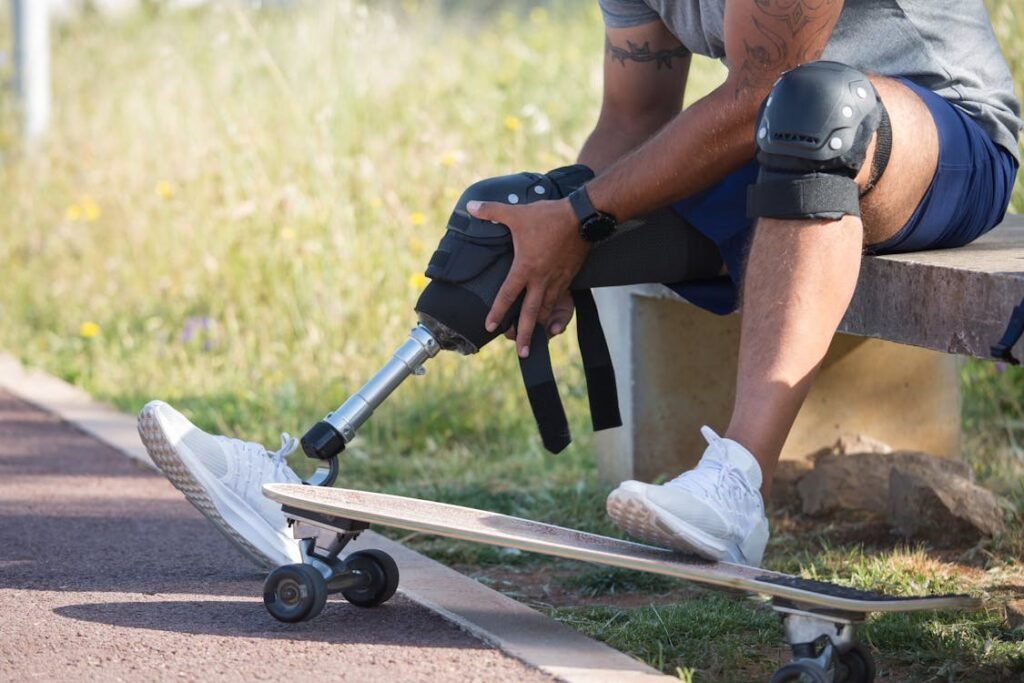
Materials and Design: What Makes a Great Running Prosthetic?
The performance of a running prosthetic depends heavily on the materials used and its overall design. Unlike standard prosthetic limbs, which prioritize stability and everyday functionality, running prosthetics are built for speed, flexibility, and energy return.
The right combination of materials and design features can make running feel effortless and natural, helping you push your limits without discomfort.
Why Carbon Fiber is the Gold Standard
Most high-performance running prosthetics use carbon fiber as the primary material. Carbon fiber is incredibly strong yet lightweight, making it ideal for running blades.
Unlike metal or plastic, which can be stiff and heavy, carbon fiber has a natural flexibility that allows it to absorb impact and return energy with each step.
This energy return is what gives running blades their signature spring-like feel. When you land on the blade, it compresses slightly, storing energy, and then releases it as you push off, propelling you forward.
This mimics the way a biological foot works, allowing for a more natural and efficient running motion.
Not all carbon fiber prosthetics are the same, though. Some are designed for sprinters who need maximum energy return in short bursts, while others are made for long-distance runners who require a balance of cushioning and efficiency.
The stiffness of the blade also matters—stiffer blades provide more power but can be harder to control, whereas more flexible blades offer a smoother ride but may not generate as much speed.
The Unique Shape of Running Blades
Running prosthetics have a distinct curved shape, unlike everyday prosthetic feet, which are designed to mimic a natural foot’s appearance. This curve allows for a rolling motion that helps with forward momentum and reduces impact on the residual limb.
The height of the blade is another crucial factor. Taller blades can provide more stride length and better energy return, but they require greater balance and control. Some runners prefer a lower-profile blade for added stability, especially when running on uneven terrain.
There are also different styles of blades based on running activity. Some blades are optimized for straight-line speed, making them ideal for sprinters, while others offer a mix of lateral stability and flexibility for activities like jogging or trail running.
Choosing the right blade shape ensures that you get the best performance for your specific type of running.
Single-Blade vs. Dual-Blade Design
While most running prosthetics use a single-blade design, some advanced models incorporate a dual-blade system for additional stability and shock absorption.
The dual-blade design works by distributing impact across two points, reducing strain on the residual limb and making longer runs more comfortable.
Single-blade prosthetics, on the other hand, are lighter and more responsive, making them ideal for competitive runners. These blades allow for quicker acceleration and more explosive movements, which is why they are commonly seen in track and field events.
How Weight Affects Performance
Weight is another critical factor when selecting a running prosthetic. A heavier prosthetic can slow you down and require more energy to move, whereas a lightweight model will feel more natural and responsive.
However, weight should be balanced with durability—some ultra-lightweight prosthetics may wear down faster, especially under intense use.
Manufacturers often fine-tune the weight distribution of the prosthetic to ensure that it doesn’t throw off your running gait. Too much weight in the wrong place can lead to imbalances, causing discomfort or even increasing the risk of injury.
Working with a prosthetist to find the ideal balance for your body and running style is essential.
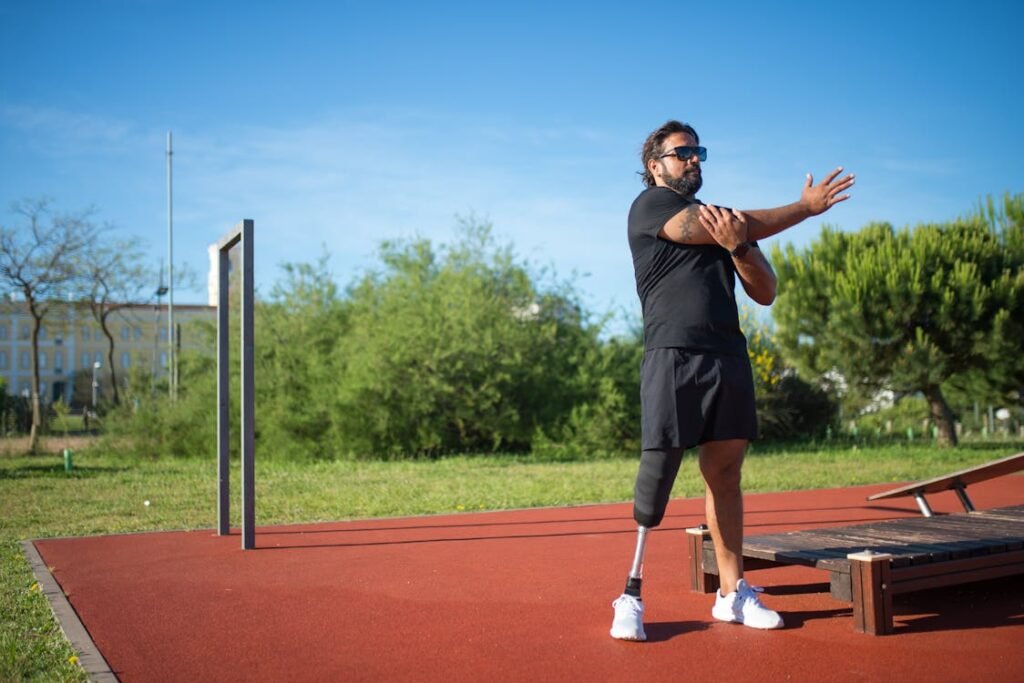
Training and Adaptation: Getting Comfortable with Your Running Prosthetic
Even with the best prosthetic limb, running will feel different at first. The body needs time to adjust, and muscles that haven’t been used in a while must be strengthened.
Whether you’re a beginner or returning to running after an amputation, patience and proper training are key. A gradual approach will help prevent injuries while improving your speed, endurance, and confidence.
The First Steps: Walking Before Running
Before jumping into running, it’s important to get comfortable walking with the prosthetic. Walking helps you get used to the weight, fit, and movement of the limb.
Many runners start by practicing on even surfaces like a treadmill or a track. This controlled environment reduces the risk of tripping and allows you to focus on form and balance.
Walking drills should emphasize proper posture and weight distribution. A common mistake is relying too much on the prosthetic side, which can cause imbalances and fatigue.
Instead, focus on keeping your movements as symmetrical as possible, engaging your core, and maintaining an even stride.
Building Strength and Stability
Running requires more than just strong legs—it also demands core stability, balance, and coordination. Before progressing to running, strengthening exercises can help improve overall body control.
Core workouts, balance drills, and flexibility exercises will make running smoother and reduce the risk of falling.
One effective way to build strength is by practicing single-leg exercises. Movements like lunges, step-ups, and controlled squats help activate the muscles needed for running.
For added stability, some athletes train with resistance bands or use balance boards to improve control over the prosthetic limb.
Gradually Introducing Running
Once walking feels comfortable, it’s time to start running in short bursts. A common approach is to alternate between walking and running for short intervals.
For example, you might walk for two minutes, then run for 30 seconds. Over time, the running intervals can be extended as endurance improves.
It’s important to focus on form during these initial runs. Running with a prosthetic may feel unnatural at first, but small adjustments can make a big difference.
Keeping an upright posture, engaging the core, and ensuring even weight distribution between both legs will help create a more efficient stride.
At this stage, many runners work with a prosthetist or physical therapist to fine-tune their prosthetic setup. Minor adjustments to the socket fit, suspension system, or blade alignment can greatly improve comfort and performance.
Overcoming Common Challenges
Every runner with a prosthetic faces unique challenges, but most can be overcome with time and the right approach. One common issue is phantom limb sensation, where the missing limb still feels present.
This can be distracting, especially in the early stages of training, but it usually decreases with time.
Another challenge is socket discomfort, especially if the fit isn’t perfect. If running causes pain or skin irritation, adjustments to the liner or suspension system may be necessary.
Regular check-ups with a prosthetist ensure that the prosthetic remains comfortable and functional as your body adapts.
Fatigue is another factor to consider. Running with a prosthetic requires more energy than running with natural limbs, so proper pacing is crucial. Gradually increasing distance and speed allows the body to adapt without unnecessary strain.
The Role of Gamified Rehabilitation
One of the most innovative ways to adapt to a running prosthetic is through gamified rehabilitation programs. These programs use interactive exercises and challenges to make training more engaging.
Virtual reality-based movement drills, balance games, and strength-building activities can speed up adaptation and make learning more enjoyable.
At Robobionics, we integrate gamified rehabilitation into our prosthetic training programs, ensuring that users can regain mobility in a fun and motivating way.
If you’re interested in learning how gamified rehab can improve your prosthetic experience, contact us today to explore our personalized programs.
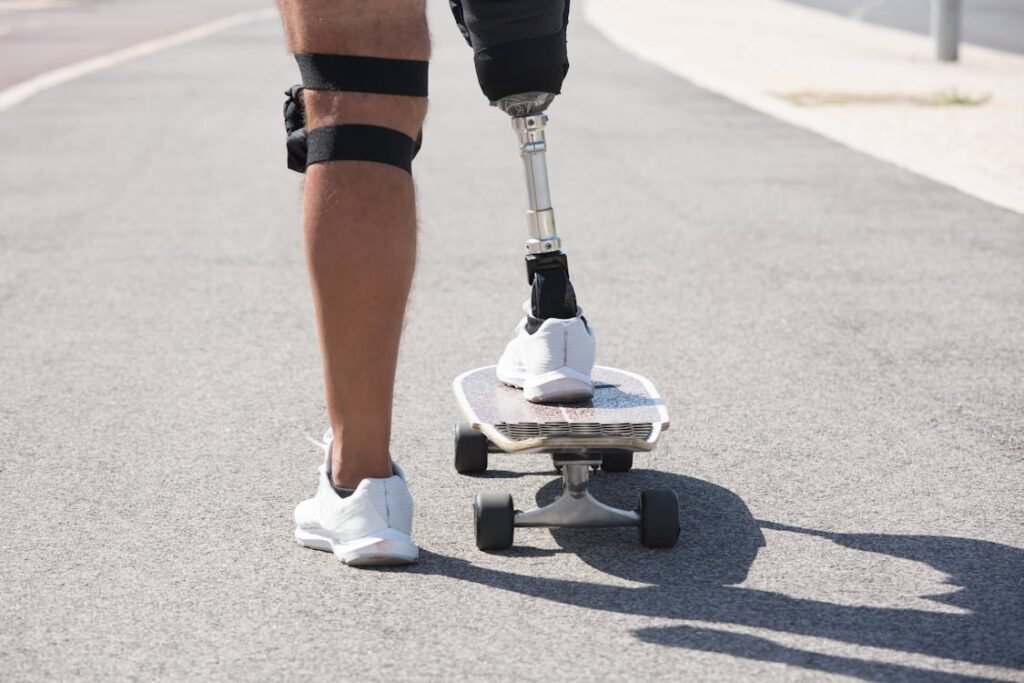
Finding the Right Prosthetist: Why Expert Guidance Matters
Selecting the best running prosthetic isn’t just about choosing a product—it’s about working with the right expert who understands your needs.
A skilled prosthetist plays a crucial role in ensuring a perfect fit, optimizing comfort, and making necessary adjustments as you progress in your running journey.
Finding the right professional can mean the difference between a frustrating experience and one that empowers you to run with confidence.
The Importance of a Personalized Fit
Every residual limb is unique, which means that no two prosthetic fittings are exactly the same. A well-fitted prosthetic ensures that the socket, suspension system, and blade work in harmony with your body.
Without proper alignment, running can become painful or inefficient, increasing the risk of injury.
A qualified prosthetist will assess your limb shape, skin sensitivity, and activity level before recommending the best setup. The initial fitting process involves creating a custom socket mold to ensure a snug and secure fit.
Adjustments may be needed over time as your body adapts, and having a prosthetist who understands these changes is essential.
What to Look for in a Prosthetist
Not all prosthetists specialize in sports prosthetics, so it’s important to find one with experience in high-performance running limbs.
Look for professionals who have worked with amputee athletes or active individuals, as they will have a deeper understanding of the mechanics of running with a prosthetic.
A good prosthetist will also listen to your goals and concerns, rather than applying a one-size-fits-all approach. They should be open to feedback and willing to make fine-tuned adjustments based on your comfort and performance.
Another key factor is access to ongoing support and maintenance. Running prosthetics experience more wear and tear than everyday limbs, so having a prosthetist who offers regular check-ups and quick repairs is a big advantage.
At Robobionics, we provide specialized support and adjustments to ensure your prosthetic continues to perform at its best. If you need expert guidance, book a consultation with us today and take the next step toward confident running.
How to Maximize Your Prosthetic Performance
Once you have the right prosthetic and expert support, ongoing maintenance is essential to keep it in peak condition. Running places stress on both the prosthetic and your body, so routine care will help prevent issues down the line.
Regularly checking the socket for signs of wear, cleaning the liner to prevent irritation, and ensuring the suspension system is functioning properly are all important steps.
Many runners also keep an open line of communication with their prosthetist to report any discomfort or changes in their performance.
Training with a coach or physical therapist who understands amputee running can also be beneficial. They can help refine your technique, improve endurance, and ensure that your gait remains efficient.
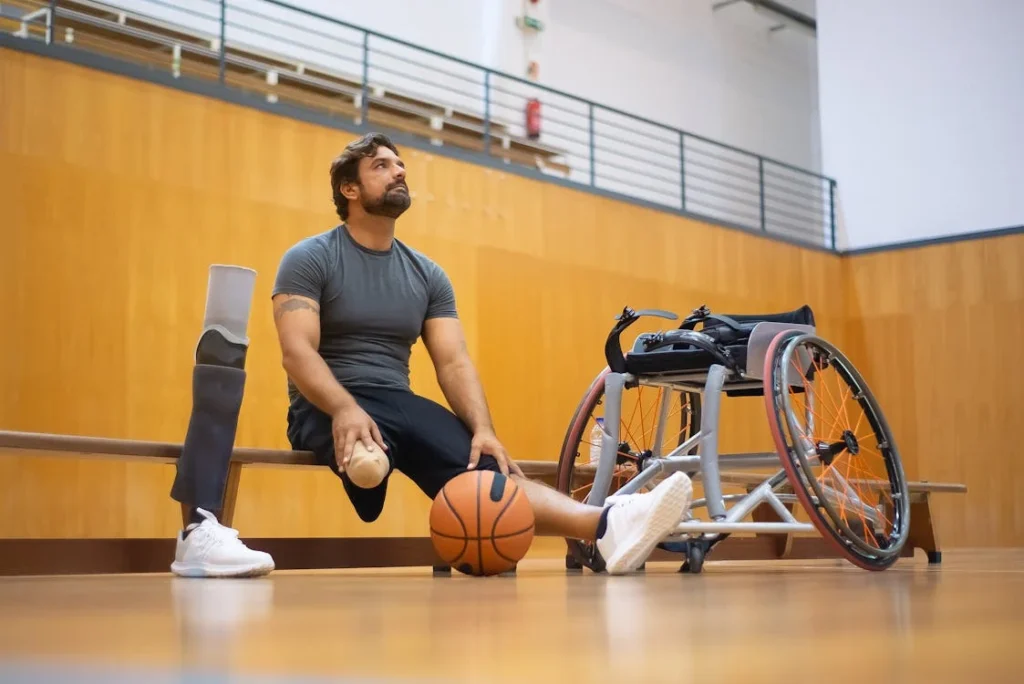
The Cost of Running Prosthetics: What to Expect and How to Afford One
Investing in a high-quality running prosthetic is a big decision, and understanding the costs involved can help you plan ahead. While these specialized limbs are designed for durability, comfort, and performance, they can also come with a significant price tag.
However, there are several ways to make them more affordable, including insurance coverage, grants, and financial assistance programs.
Understanding the Price Range
Running prosthetics vary in cost depending on the type of blade, the materials used, and the level of customization required.
Basic models designed for casual jogging or beginners may start at a lower price point, while high-performance blades built for competitive running can be significantly more expensive. The complexity of the socket and suspension system also affects the overall cost.
Another factor influencing the price is whether the prosthetic is custom-made or off-the-shelf. Custom prosthetics, which are molded to fit your specific limb shape and needs, tend to be more expensive but offer better comfort and performance.
Standardized options may be more affordable but might not provide the same level of fit and functionality.
Does Insurance Cover Running Prosthetics?
Insurance coverage for running prosthetics varies by provider and country. In some cases, health insurance will cover a portion of the cost, but many policies only provide coverage for essential prosthetics meant for everyday use.
Since running prosthetics are often considered recreational or specialized equipment, they may not be fully covered.
However, some insurance providers offer sports prosthetic coverage for active individuals, particularly if running is an important part of your rehabilitation or overall health.
It’s worth checking with your provider to understand your specific benefits. If your insurance doesn’t cover running prosthetics, there are still other options to explore.
Financial Assistance and Grant Programs
Many organizations and foundations offer financial aid to individuals who need specialized prosthetics. Grants for adaptive athletes, disability support programs, and prosthetic-specific funding initiatives can help offset the cost.
Some well-known organizations provide funding for amputees who wish to participate in sports, including running.
At Robobionics, we can help guide you through the financial assistance process by connecting you with resources that support prosthetic users. If you need help finding grants or understanding financing options, contact us today to explore available funding solutions.
The Value of Investing in the Right Prosthetic
While the cost of a running prosthetic may seem high, it’s important to view it as an investment in your mobility, health, and overall quality of life. The right prosthetic limb allows you to run with confidence, prevent injuries, and enjoy the physical and mental benefits of staying active.
Many users find that the freedom and independence gained from a high-quality prosthetic far outweigh the initial cost.
By working with experienced prosthetists, exploring financial assistance, and choosing a prosthetic suited to your needs, you can make running with a prosthetic a reality.
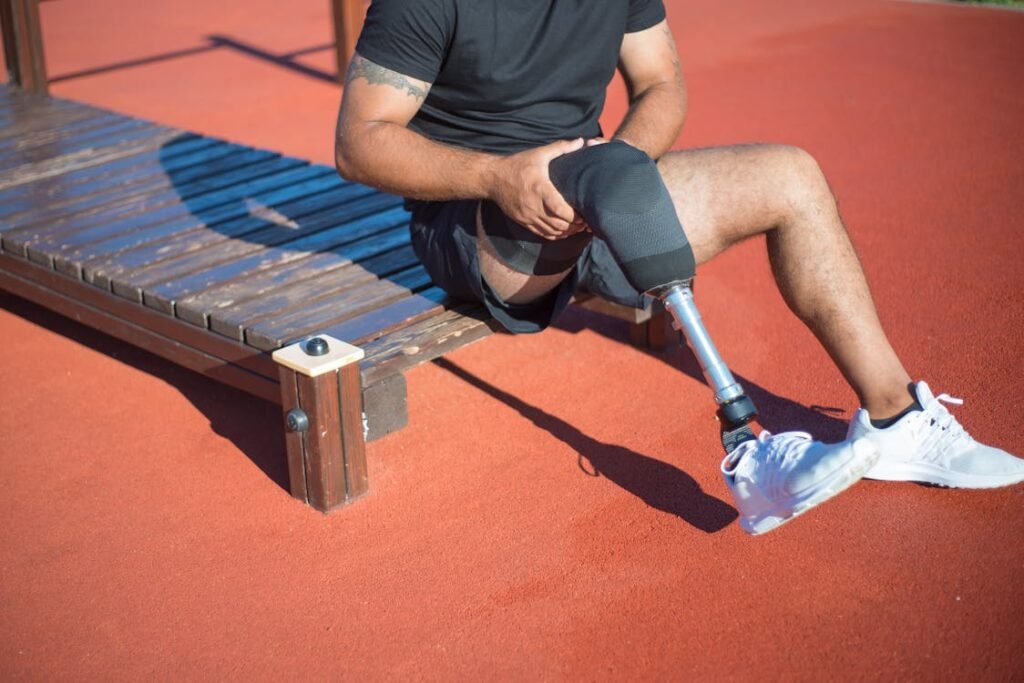
Choosing the Right Brand: Which Prosthetic Companies Offer the Best Running Limbs?
With so many prosthetic manufacturers on the market, selecting the right brand for your running prosthetic can be overwhelming.
Each company offers different designs, technologies, and levels of customization, so it’s important to choose one that aligns with your needs. Factors like durability, comfort, energy return, and after-sales support should all be considered before making a decision.
Leading Prosthetic Brands for Running
Several global and local companies specialize in running prosthetics, each offering unique innovations. Some brands focus on high-performance running blades for competitive athletes, while others cater to casual runners looking for comfort and ease of use.
One of the most well-known brands in the industry is Össur, which manufactures the popular Cheetah® series of running blades. These prosthetics are designed for high-energy return and are widely used by elite athletes.
Another top manufacturer is Ottobock, which offers running prosthetics that balance performance and everyday functionality, making them ideal for both casual and serious runners.
While these international brands are widely recognized, they come with a high price tag and may require expensive imports and long wait times for repairs.
This is where Robobionics stands out as a leading Indian prosthetics manufacturer. Our innovative solutions are designed for the needs of Indian users, providing cost-effective, high-quality, and easily accessible prosthetic options that don’t compromise on performance.
If you’re looking for a reliable and locally supported prosthetic, Robobionics’ advanced prosthetic solutions offer the perfect balance of technology, affordability, and service. Book a free consultation today to explore how we can help you find the ideal running prosthetic.
Why Local Support Matters
One of the biggest challenges with imported prosthetic limbs is the lack of immediate service and maintenance support. Running prosthetics experience significant wear and tear, requiring periodic adjustments to maintain peak performance.
If a part breaks or the fit changes, waiting for an international replacement can be costly and time-consuming.
By choosing a locally designed and manufactured prosthetic, you get faster service, more affordable maintenance, and access to expert support whenever you need it.
At Robobionics, we provide after-sales care, ensuring that your prosthetic remains in top condition without unnecessary delays.
Conclusion
Running with a prosthetic limb is more than just regaining mobility—it’s about reclaiming freedom, independence, and confidence. With the right prosthetic, proper training, and expert support, you can enjoy running just as much as anyone else. Whether you’re a beginner taking your first steps or an athlete pushing your limits, choosing the best running prosthetic will make all the difference.
The key is finding a prosthetic that suits your running style, fits comfortably, and provides the right balance of stability and energy return. Working with an experienced prosthetist, investing in a high-quality limb, and gradually building strength will ensure a smooth transition into running.
At Robobionics, we are committed to helping amputees regain their active lifestyles with affordable, high-performance prosthetic solutions. Our advanced prosthetics are designed for Indian users, offering top-tier quality with local support and faster service. If you’re ready to experience the difference, book a free consultation today and take the next step toward running with confidence!



